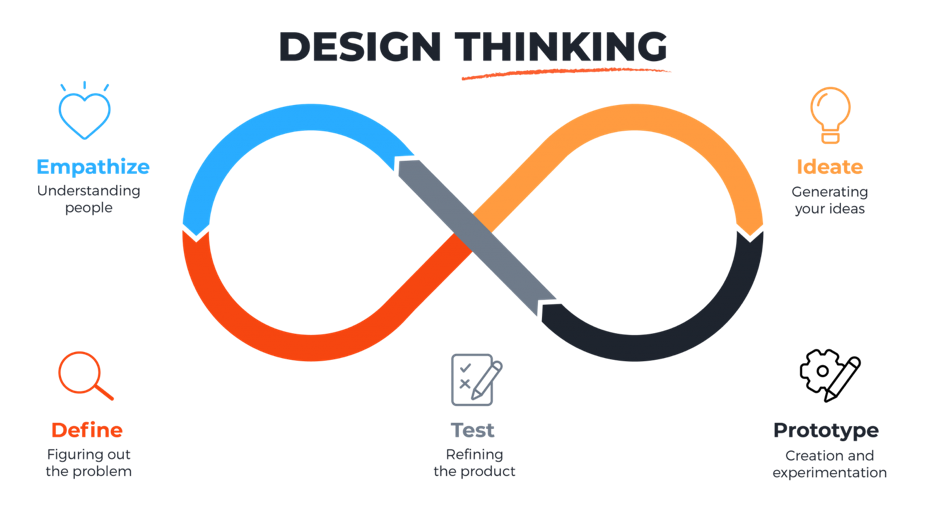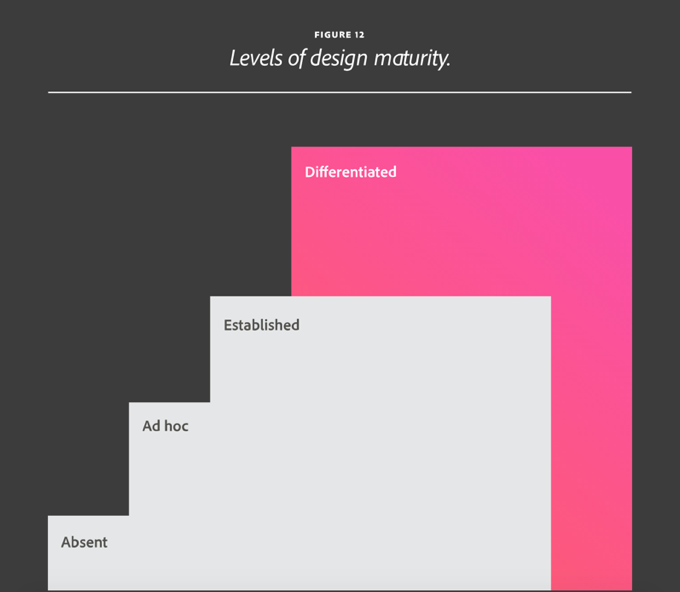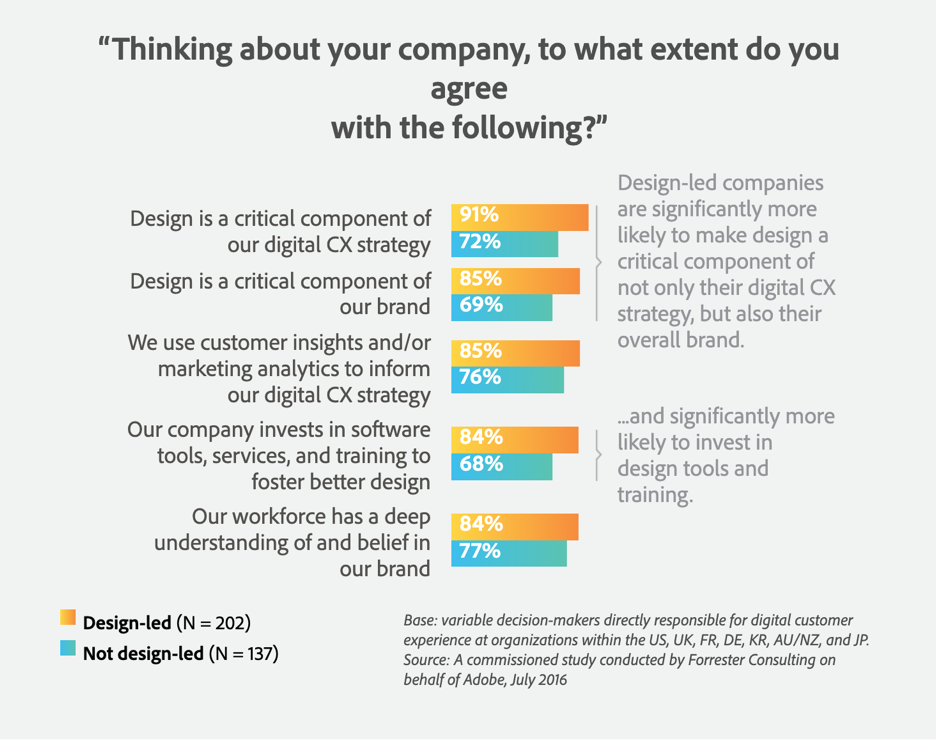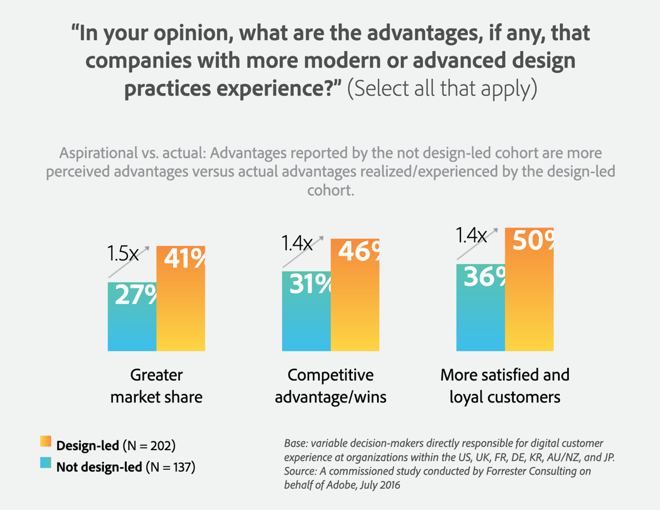Design Thinking in Software Testing
Design thinking is a powerful paradigm that software testers and QA professionals can use to create more user-centric software.
Join the DZone community and get the full member experience.
Join For FreeAccording to Adobe, design-led companies reported 50% more loyal customers and 41% greater market share when the design is implemented in a top-priority and high-quality manner. It plays a multi-level role in helping not only to guide product development but also in establishing a connection with the customer by providing a well-differentiated experience.
Principles of Design Thinking

The fundamental principles behind design thinking are empathy, ideation, and prototyping. Empathy is about understanding the user’s needs and perspective. Ideation is about generating new and innovative ideas. Prototyping is about creating a prototype of the product and testing it with actual users to get feedback.
The five steps involved in design thinking are:
1. Empathize: Understand the user’s needs and perspective.
2. Define: Define the problem that needs to be solved.
3. Ideate: Generate new and innovative ideas.
4. Prototype: Create a prototype of the product.
5. Test: Test the product with actual users to get feedback.
These steps can be applied to any subject in order to gain a deeper understanding of it. Design thinking is a human-centered approach that puts the end user's needs at the center of any product development. This approach allows businesses to achieve their objectives by creating products that are convenient and easy to use for customers.

Additionally, design thinking can be used to test the feasibility of the future product and its functionality at the initial stage. This approach brings such benefits to software development as feasibility checks, no alarms, no surprises, clarity, and transparency.
Design Thinking Applied to Software Testing
There is scope for applying the principles of design thinking in the domain of software application testing in order to improve the quality of software products. Design thinking can help in generating new and innovative ideas for testing software products.
Each principle of design thinking can be applied to software application testing in order to create more user-centric software:
- Empathize: In order to design software that is user-centric, it is important to first understand the end user's needs and pain points. This can be done through user research through interviews, surveys, and focus groups. Additionally, Quality Engineers can observe end users using analytics to get a better understanding of how they interact with the application.
- Define: Once the end user's needs have been understood, the next step is to define the problem that the software needs to solve. This will help to guide the development of the software and ensure that it is focused on the right things. This involves business analysis, user experience design, and rapid prototyping. From a testing standpoint, defining test cases with the right motive is a very crucial part of making sure the test strategy works overall.
- Ideate: Once the problem has been defined, the next step is to come up with potential solutions. This can be done through brainstorming sessions with the team. It is important to come up with as many ideas as possible and not judge them at this stage. For testers, it will include sharing the list of test plans devised in the previous step across BA, Design, and technical leadership and making sure all stakeholders are on the same page. This could also involve deciding upon various other factors like the degree of automation, the kind of regression, the best reporting structure, etc.
- Prototype: The next step is to take the ideas that have been generated and create prototypes. These prototypes can be used to test the feasibility of the ideas and to get feedback from users. This could include implementing the test plan for some of the crucial flows in order to gauge a better view of the test process itself. implementing Automation testing at all stages, including unit, integration, system, and acceptance tests using the latest tools, cloud platforms, and AI/ML-based tools.
- Test: The final step is to test the software in production and with actual users. This will help to ensure that the software meets their needs and is user-friendly. Generating appropriate reporting and communication at all steps and ensuring the right action in cases of failure.
Although there is no substitute for real user acceptance, implementing a test strategy with proper design thinking in place will help reduce any low-impact and non-essential activities in the testing workflow.
Design-Thinking With Agile and Waterfall Development
There are a few key differences between design thinking and agile development. Design thinking is focused on solving problems from the user's perspective, while agile development is focused on delivering features quickly and efficiently. Design thinking also emphasizes collaboration and iteration, while agile development emphasizes individual responsibility and accountability.
There is no reason why a software testing team working with DevOps under agile development couldn't try to implement design-thinking principles in their test strategy. In fact, it might be beneficial to do so in order to get a better understanding of the user's perspective and to find ways to deliver features more quickly and efficiently.
Design thinking can have a profound impact on the software development and testing teams in both agile and waterfall modes of development. In agile development, design thinking helps the team to focus on the user experience and the customer journey, while in waterfall development, it helps the team to optimize the requirements gathering and documentation part.

The team will develop a better ability to identify user needs and develop the software accordingly. The team can also test the software early and often to ensure that the software meets the user’s needs.
Design-Thinking With Manual and Automated Testing
In a tech start-up with a conventional team structure where the processes are divided into business analysis, user experience design, software development, and quality assurance, the overarching paradigm could be agile, or it could be the waterfall. Automation gaining popularity within the testing community is an ever speeding phenomenon, and it is expected that the total percentage of automation is going to skyrocket in the coming years, especially due to the advent of cloud-based tools, which make it super easy for teams to implement and collaborate on automation testing at various layers.
In a manual test scenario, design thinking can be used to develop a testing strategy that is tailored to the specific needs of the project. For example, if the goal is to improve the usability of a website, the team might use design thinking to come up with ideas for how to test the site with real users. This could involve creating user profiles, identifying user tasks, and creating test scenarios. Once the team has a plan in place, they can then execute the tests and analyze the results to see if the website meets the needs of the users.

Design thinking can enhance cloud-based automation testing by helping to create a more user-centric approach to the design and development of test automation scripts. Design thinking can help to ensure that the test automation scripts are designed in a way that maximizes their usefulness and effectiveness.
It can be used to enhance cloud-based automation testing by thinking about ways to automate the testing process itself. Design thinking could be used to come up with ways to improve the test case design, team structure, resource allocation, and module prioritization.
Design Thinking With Black and White Box Tests
Design thinking principles are applied differently for white box and black box automation testing because of the different levels of knowledge that the testers have. For white box testing, the tester needs to deeply understand the system to design tests that exercise all the functionality. For black-box testing, the tester only needs to have a superficial understanding of the system in order to design tests that exercise the functionality from the perspective of the end-user.
Design thinking is applied to the unit and integration testing of web and mobile applications in order to ensure that the tests are comprehensive. Unit tests are used to test the individual components of the system, while integration tests are used to test the interactions between the components. This includes:
- Focusing on the user experience: Testers should always keep the user experience in mind when testing websites and mobile applications. This means considering things like how easy it is to use the interface, how intuitive the navigation is, and whether the overall experience is enjoyable. Another crucial data point that has to be considered is the type of devices a particular user set is most likely to use. In order for the test environment to be realistic, we have to make sure that we are testing on devices and networks similar to the users.
- Simplicity is key: When it comes to testing, simpler is often better. This principle can be applied to both the design of the test itself as well as the way the test is executed. It is hard to maintain simplicity in an environment where new applications are being added to the stack, and those applications are being updated with new features all the time. The key here is that if you started with a simple and impactful enough plan, only then you will be able to handle the complexity of later-stage scaling-related issues.
- Thinking outside the box: Sometimes, the best solution to a problem is not the obvious one. Designers should be open to creative solutions that may not be immediately apparent. Browser stack not only provides a wide stack of cutting-edge tools, but it also provides resources and information for developers and technical leadership in order to help them build a more advanced test strategy.
- Iterate, iterate, iterate: Testing is an iterative process, which means that designers should expect to make changes and refinements along the way. Here again, cloud platforms, with their scale as you use philosophy, provide the best conducive environment for cost-effective explorations. For automation testing having the ability to run tests parallelly and monitor them effectively through visualization is an added advantage.
- Always be learning: New technologies and approaches are constantly emerging, so it’s important for designers to stay up-to-date on the latest advancements. One way to implement this direction is to build a stack of tools that helps members of the design team perform various tests, validations, or analyses on a website or mobile application, without having to get involved in the development or QA process.
Implementing all this knowledge into an actual system is a multivariate problem. There could be many approaches with varying degrees of success in their outcomes. The definition of a successful outcome could be different in different business scenarios. Hence keeping an open mind and being up-to-date with the latest trends is one way of ensuring some semblance of cohesion throughout the process.
Published at DZone with permission of Vivek Mannotra. See the original article here.
Opinions expressed by DZone contributors are their own.

Comments